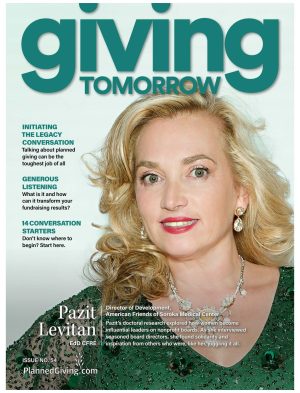A culture of philanthropy ranks as one of the most vital foundations to a successful development department. Nonprofits looking to boost fundraising and build substantial relationships with major donors should first measure the strength of their organization’s culture of philanthropy.
What is a culture of philanthropy? How do you build philanthropic culture? Continue reading to learn practical ways to infuse this mentality into your nonprofit and experience smoother major gifts fundraising.
What is a Culture of Philanthropy?
Whether it has been built intentionally or not, every nonprofit holds a unique organizational culture. Every aspect of your nonprofit contributes to the culture, from how someone is welcomed when they enter your building to your policy for responding to social media messages.
More simply: how someone feels when they interact with your nonprofit is your culture of philanthropy.
Philanthropy literally comes from two root words: philo (love) and anthro (people). The best way to evaluate your culture of philanthropy is how well you are demonstrating a love for the people you serve via your processes.
Why Build a Culture of Philanthropy?
Nonprofits working with the intention to build a culture of philanthropy experience easier fundraising asks. Why? Because your mission has come alive for anyone who encounters your nonprofit.
Instead of having to polish an elevator pitch or endlessly train volunteers on talking points, your donors already know your values through the culture of philanthropy they feel. When you take the time to infuse a culture of philanthropy throughout your nonprofit, it will pay off with stronger, more authentic donor relationships.
Ways to Build a Culture of Philanthropy
It is important to remember that a culture of philanthropy does not have an end date. Instead nonprofit leaders must weave appropriate principles into their daily procedures that communicate a culture of philanthropy.
Whatever your role at your nonprofit, you can add some principles of a culture of philanthropy. Begin by considering two ideas:
- How does my department/responsibilities relate to our mission?
- How can I communicate my relation to the mission through my everyday activities?
Break down your responsibilities into the smallest unit of tasks. When you have an individual task, consider if there is an opportunity to infuse philanthropy into that task.
If you are the person tasked with answering the phone, how can you support a culture of philanthropy at your organization? Perhaps the answer is in making sure you are as informed as possible about your nonprofit’s mission so you can give excellent support to people on the phone. Consider implementing a memo book procedure where press releases and other important updates can be referenced in one place. Maintain your understanding of major donors and other VIPs for the organization.
Your contribution to the mission is in delivering excellent customer service. When current or potential major donors call, it is essential every person in the organization knows who they are and can perform appropriately.
Maybe you work in program leadership at your organization. Your contribution to the mission is naturally clear; delivering the services that uplift your community. But how can you elevate your everyday tasks to be more philanthropic?
One way you can boost the culture of philanthropy at your nonprofit is including philanthropic topics in your monthly staff meetings. Share a story of someone who benefited from your program or relay exciting news about a new source of grant funding. Explain the significance of these things in the context of the organization’s larger goals.
Development directors like to say, “fundraising is everyone’s job” – but it’s true! When staff is adequately informed and inspired about the deeper purpose behind their work, it will come through in their effort at work. Employees may even feel motivated to share the meaning behind their work with others. Nothing pays off more than positive word of mouth!
This effortless infusion of philanthropy into something you already complete, like a standard staff meeting, is a perfect example of a practical application of a culture of philanthropy. The main takeaway from this idea is to gradually infuse the spirit of giving into your specific role. Over time, a culture of philanthropy will become natural.
Most Essential Element of a Culture of Philanthropy
Your organization’s culture brews in the background of everything you do on a daily basis. Whether you pay attention to it or not, the activities you consistently perform communicate to your donors who you are.
That’s why consistency is the most essential element in a culture of philanthropy. Whatever you decide to implement in a fresh, more philanthropic work environment, make sure you can commit to it.
Why is consistency so important? Donor relationships are built on trust. If you decide to start sharing stories of impact with your board members, continue doing it every time you meet. Adopting and then abandoning ideas can demonstrate instability, especially when you are performing tasks whose purpose is to elicit an emotional response.
Conclusion
Deciding today to infuse more of a genuine “love of people” into your work environment is the first step in building an essential culture of philanthropy. Whatever your mission statement or brand identity of your nonprofit, the way your organization interacts with donors and the general audience truly communicates who you are. The best way to build authentic relationships with major donors is to build a consistent culture of philanthropy.
Whether you manage a team or just yourself, consider how you can infuse more philanthropy into your daily tasks. Whatever you choose, commit to something you can deliver consistently to experience the best results with your major donors.





